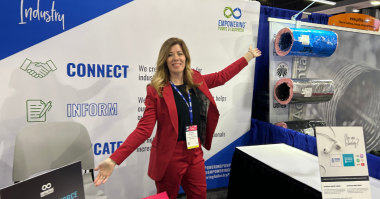We all have our top ten lists of favorite songs, favorite foods, and favorite movies, so let’s review our Readers’ Top 10 Articles of 2015. These most popular articles are linked below in case you missed reading them when they were first published. Have a look at our Top Ten list and use the comments section below to submit your request for pump topics you would like to see covered in the future.
The Differences between Centrifugal Pumps vs. Positive Displacement Pumps
Build up your knowledge of different types of pumping equipment. This article discusses the following types of pumps: electrical submersible pumps, helicon-axial pumps, deep well pumps, progressive cavity pumps, twin screw and multiple screw pumps, deep well submersible pumps, chemical process pumps, and rotary lobe pumps. Read more…
Some Effects of Operating Pumps Away from Best Efficiency Point
Increasing pump reliability. Achieving higher efficiencies. Improving mean-time-between-repair. These goals can all be attained by understanding BEP, or Best Efficiency Point. BEP essentially defines the flow at which a pump operates at the highest or optimum efficiency for a given impeller diameter. Operating a pump at flows greater than or less than the flow designated by the BEP can cause adverse effects. Read more…
Preventing Water Hammer from Damaging Pumps and Pipes
Water hammer, also known as “surge flow”, can cause pipes to burst, create leaks at joints, and damage supports and pipe racks. This article thoroughly explains how water hammer occurs and provides 10 possible solutions for resolving water hammer issues. Read more…
Precision alignment is critical for rotating machinery and checking Runout is a MUST. Severe runout can cause an array of issues with pumping equipment, including excessive vibration, seal wear, and bearing damage. Read this article to learn more about concentricity and how to check Runout. Read more…
Pipe Strain and Its Effect on Shaft Alignment
The best lessons are learned from industry professionals who have real-world experience with pumps. In this article, a millwright explains his experience with pipe strain, which is unwanted pressure or movement in piping systems. Read this article to learn how to identify and correct pipe strain issues. Read more…
Guidelines in Determining Allowable Values for Bearing Housing Vibration on Rotodynamic Pumps
All pumps vibrate during operation, but determining allowable values for bearing housing vibration can help avoid pump problems. This article provides guidelines on how to measure bearing housing vibration on rotodynamic pumps. The vibration measurements shared in this article can be used for operational monitoring, acceptance tests, diagnostic or analytical investigations. Read more…
Design and Application Factors Affecting NPSH Margin
Determining an acceptable NPSH margin can help you improve pump reliability and increase overall service life. Pump type, application, and physical operating conditions can affect your NPSH (Net Positive Suction Head) margin. Read this article to better understand NPSHR, NPSHA, and NPSH3, as well as several pump characteristics and applications factors that need to be considered. Read more…
Choosing a Flexible Pump Connector
Nozzle loads from pipe misalignment and thermal expansion can cause seal leakage, coupling problems, and bearing problems, so using a flexible pump connector can help you avoid these problems. This article discusses the advantages and disadvantages of rubber connectors, braided hose connectors, metal bellows connectors, and PTFE connectors. Read more…
Centrifugal pumps are the most common type of pump. They can be configured in many ways and operate in a variety of applications. This article covers basic concepts regarding centrifugal pumps, reviews applications and technological advances, and also discusses the ‘pros’ and ‘cons’ of using centrifugal pumps. Read more…
Our sponsors’ company profiles were among the highest visited pages on our website. This is no surprise considering our sponsors contribute valuable information to share with the industry. I invite you to review their profiles, which contain links to videos, whitepapers, and other helpful resources. Read more…
2016 presents a brand new year, full of opportunities to Connect, Inform, and Educate people working in the pump industry. Please send me your news and stories to help us keep the pump industry informed on the latest trends and best practices.





Comments